why I am growing organic
I want to grow organic – I believe there is a lot of truth in the saying “you are what you eat” and I like the slogan “let food be your medicine and medicine your food” – all within reason since we do depend on conventional medicine – though I would like to see a more holistic and functional approach than just treating the sympton, allowing the patient to consume the junk foods to keep them happy and then saying goodbye – until next time. There is just too much spraying going on and also a lot of our fruit and vegetables have been specialized to be sweet with the loss of good nutrients. So I like heirlooms but do not object to some hybrids. And then, of course, there is the challenge. And what a challenge it can be.
the challenges of growing organic
Growing organic is a big challenge in mid to late summer in the south, when the predators have amassed and set vigorously upon the vegetation. And of course growing organic precludes the use of insecticides or herbicides or any -cides synthetically produced. There are organic deterrents – my standby is neem oil, but it is harmful to the beneficials like ladybugs so I minimize its use. Although in chess some say attack is the best form of defense, this doesn’t work well in the grow organic world. Yes you can remove the egg infested leaves before the foe emerges and yes you can handpick the advance guard before they multiply, but the best defense I believe is building up the vigor of those who will be tested. So I try grow healthy plants and use lots of compost – see link to compost making. And I self educate – know your enemy.
In addition to nutrition, watering is important. I know an army marches on its stomach but a dehydrated army won’t march at all. Most of my plantings are irrigated by gravity fed bubblers but since the bubblers occasionally clog (usually from algae in the rainwater storage tanks) I have to monitor the watering. I also handwater select plantings with a hose and, in watering, monitoring, listening and looking, I have become more attuned to what is happening about the plants.
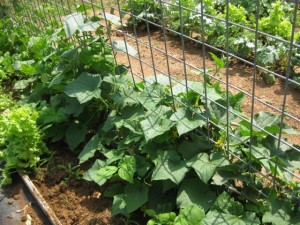
I have not (to date) been successful with squash – the squash bug and the squash borer destroy the plant before it can produce squash. This year, with increased psi (pressure) from my more elevated gravity fed irrigation system I was able to water the squash with a hose (prior years it was a dribble of water). The hose water makes the squash bugs, which have excellent camouflage, bestir themselves and since they are slow moving I was able to handpick most of them. Actually I used 7” long tweezers to grab them and then dropped them in a container of alcohol. A horizontal rail I set above the squash plants (the idea was to use insect barrier row covers draped over the rail, but this was ineffective) apparently is now being used as a hunting perch by insect loving birds and these allies have also helped to reduce the squash predators. I am hoping my growing organic efforts will deliver squash this year and I don’t even mind if luck and unintended consequences are the main contributors – just let’s get some squash.
Critical inputs for growing organic
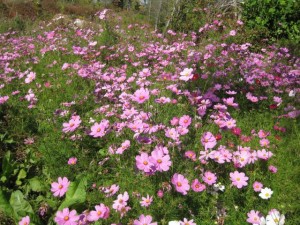 To grow successfully you need sun, soil and water. The availability of these key inputs may change with time.
To grow successfully you need sun, soil and water. The availability of these key inputs may change with time.
When we arrived in Atlanta, I carefully chose a house on flat ground so I would have maximum sun exposure. And I did have lots of sun until my neighbor’s trees and my own trees (leyland cypress and bradford pear) blocked out the sun and restricted my planting area to a 30’ by 10’ area.
Although the soil was clayey, I was confident I could improve it with lots of compost. And so I did and had magnificent tomatoes for several years running. However, with my now limited planting area I could not rotate my plantings and after a few years, soil borne disease (verticillium wilt) proved too much for my tomato plants.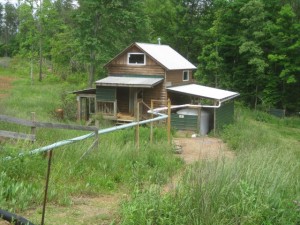 Finally, water which had been cheap and unrestricted became expensive and restricted and growing organic seemed beyond reach.
Finally, water which had been cheap and unrestricted became expensive and restricted and growing organic seemed beyond reach.
However, faced with these new realities and in pursuit of my “Nu Trac”, I relocated my growing organic operations 50 miles north where there is lots of sun exposed land to rotate crops, impervious surfaces for rainwater harvesting, and wells, if needed, for pumping water. So growing organic is much easier plus the new location has adjoining woods for walks with the dog.
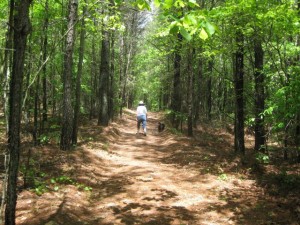

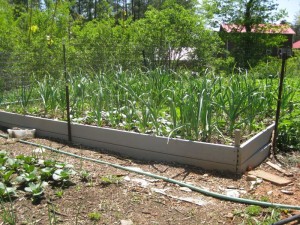
Love the pictures, and the way you capture both the wonder of nature and the battle with the elements (& bugs). We’re just part of the ecosystem, trying to turn the tide of rain, sun, and luck to our advantage! Persistence and even cunning (tweezers and alcohol) count in this no-holds barred competition. Sounds like you’re succeeding.